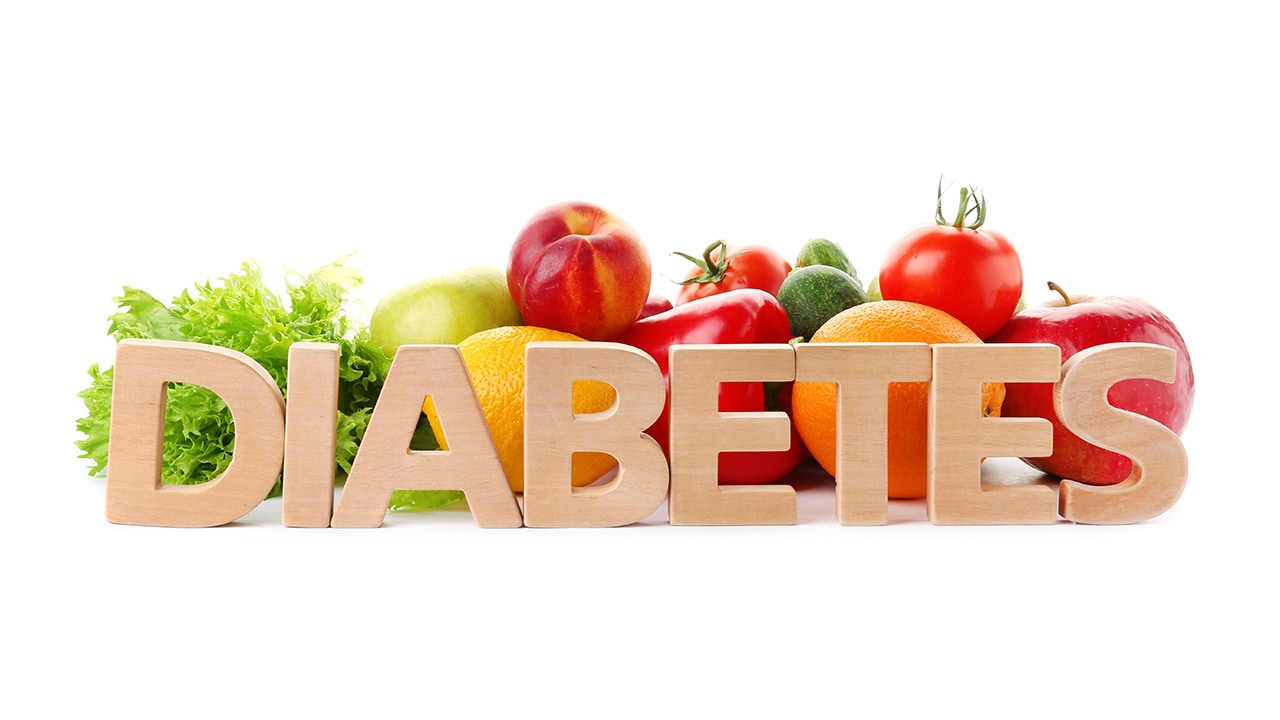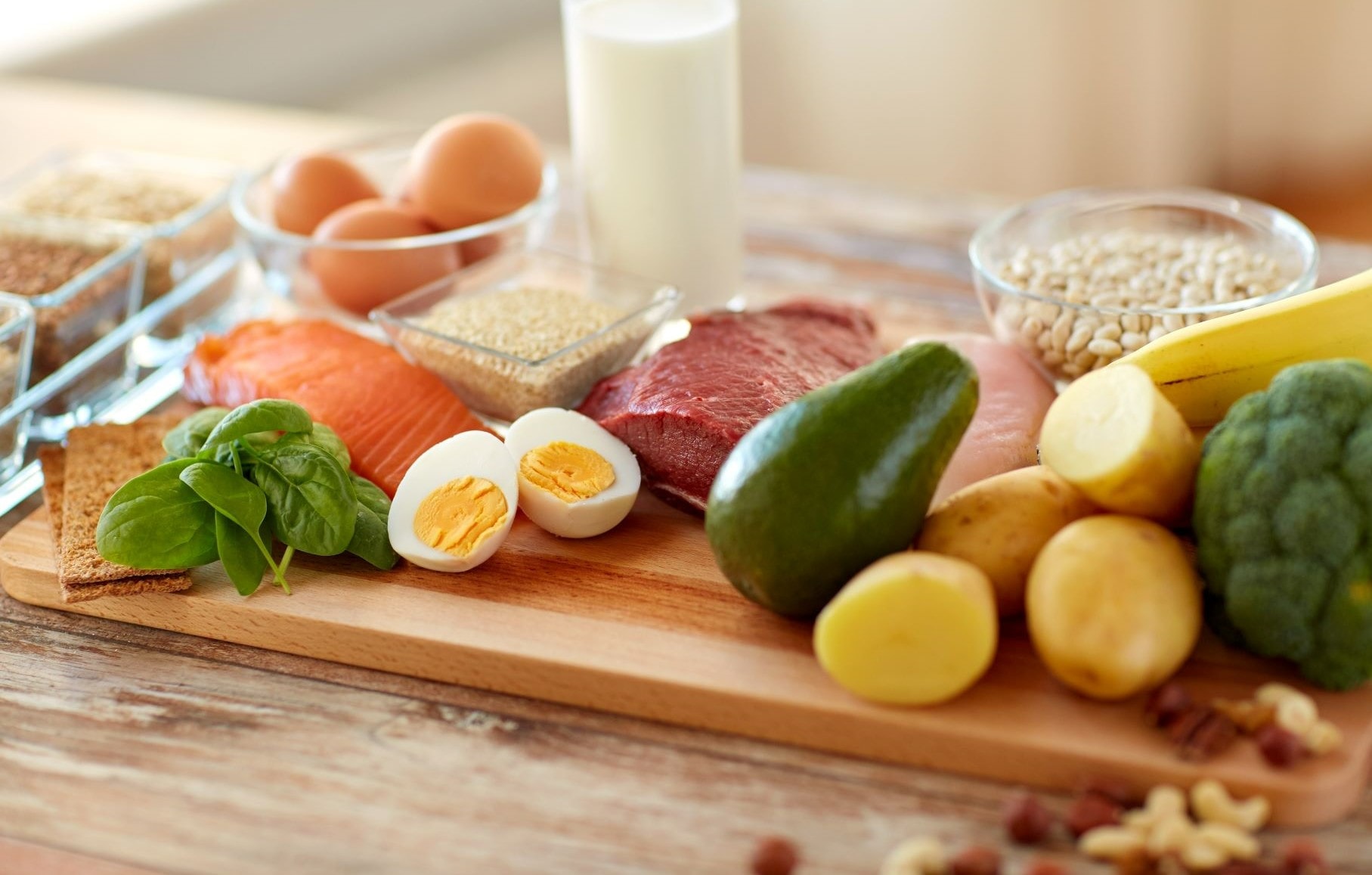Navigating nutrition & diabetes


Nutrition and diabetes go hand-in-hand. That’s why today, we asked Medtronic Senior Diabetes Clinical Manager, Jennifer Morrison, MPH, RD, CDCES, who has been with us for 10 years, to talk more about this important topic.
Keto or paleo? Gluten-free or whole grain? Sugar-free or natural sugars? With so many messages, it’s no wonder nutrition can be confusing. There are a lot of different options for dietary management, and managing healthy eating while living with diabetes is an added layer of complexity. When in doubt, remember: eating quality, nutritious foods in portions that do not exceed calorie needs helps promote overall health.
How to fuel your fire
As we have gained understanding about the digestion of foods, diabetes nutrition counseling has transitioned into education on the nutrients of the foods—carbohydrates (carbs), protein, fat, and fiber— and how they impact glucose levels after intake. Carbs are the starch or sugar in the food that break down into glucose molecules and raise blood sugar after being consumed. Yes, proteins are important, but they are not carbs—so how should they be considered in glucose management? Think of your blood sugar like a fire. You are going to fuel the fire several times a day. Do you want to build a couple big fires (that could result in higher blood sugars) or spread several small fires throughout the day (to help with fullness and controlling blood sugar levels)? Makes more sense to spread the calories (fuel) throughout the day, right? In building this fire, there are a few different fuel sources to consider: 
- Carbs are the paper. Simple carbs like sugar, juice, and candy are like newspaper that lights quickly, and sometimes are needed to recover the fire (like when treating a low blood sugar), but the fire isn’t fueled best on these sources all day long. Complex carbs such as whole grains (oats, quinoa, and wild rice) and high-fiber carbs (beans and legumes) act like cardboard in the fire. They burn more slowly and help prevent fire bursts— spikes in blood sugar.
- Protein is the wood. It provides a long-lasting fuel source for the fire and makes sure it can stay lit without spiking or shrinking.
- Fat is the coal. A great bedrock on which to build your fire.
Fires can run on any one of these sources, but the combination/volume will greatly impact how the fire burns. Likewise, blood sugar is impacted by all these sources and the combination of the food quality and portion quantity. How do you want to build your fire? A sustainable fire includes carbs (the more complex, the better!) balanced with a portion of protein and/or fat. Choosing complex carbs that are higher in fiber will be friendlier to blood sugar levels, but calories should come from a variety of nutrient-dense foods and be spread throughout the day between meals and snacks that include a balanced amount of carbohydrate + protein/fat.
Your relationship with food and lifestyle goals
When deciding on your nutrition approach, keep in mind a few other factors:
- Budget: If budget is a key concern for you, try planning out the meals and snacks you need for the week in a shopping list. You may be able to revamp your food budget to minimize over-eating at home and over-spending in the store.
- Portions: Buying in bulk may help you save money, but you will need to understand the right portion size and invest time into pre-portioning food to prevent overeating.
![]() Tip: Individually packaged foods or portion your own snacks into single-serving containers to help prevent overeating. You can use a permanent marker to note the carbs in each portion for easy grab-n-go options.
Tip: Individually packaged foods or portion your own snacks into single-serving containers to help prevent overeating. You can use a permanent marker to note the carbs in each portion for easy grab-n-go options.
- Lifestyle: Keep in mind things that are important to you as well, whether it’s religious or cultural considerations, vegetarianism/veganism, locally grown or sustainably packaged food, etc.
- Taste: Make sure to focus on the foods you enjoy eating so it’s a nutrition plan that works for you long-term.
- Chef skills: Are you skilled in the kitchen and a self-proclaimed “foodie?” Then recipes, grocery shopping, and meal prep are already part of your weekly routine! Bulk cooking could be a great option for weekly meal planning. Others may not have the time for meal prep and could look into mail order meal prep kits, ready meals, or frozen meal options.
![]() Tip: Consider having different sized containers on hand to store or freeze for meal prep and snacks.
Tip: Consider having different sized containers on hand to store or freeze for meal prep and snacks.
Tools for Success
Ensuring you have the right resources might make all the difference in potential success for new year’s nutrition goals. Here are some tools that may help: A digital nutrition label food scale could be a great investment in 2021. This is a scale that allows you to enter the code of the food and view the exact calories and carbs by weight! This is really helpful for cooked foods such as pasta and rice and also for foods without labels like fruit. It’s a great tool for building portion accuracy and reducing the guesswork around carb counting. Key features to look for are:
- A digital image of the nutrition facts label (similar to what is shown on FDA approved food packages)
- An expansive code list. Aim for a code book with at least 2,000 food codes. Some of the newest models online have Bluetooth capability that link to apps with thousands of codes. A “save and total” feature that allows you to enter and save multiple foods and total the nutrition for the whole meal.
There are also apps right on your smartphone that can be a big help. The Nutrition Tracker app integrates a food diary, calorie and carb counter, nutrition database, and restaurant nutrition look-up tool. As you log foods into a nutrition app, it can store your entries, essentially building a personalized database of your regularly eaten foods and beverages. Most apps will also allow you to customize the facts or even feature a built-in camera and bar code scanner. Finally, since portion accuracy determines carb count accuracy, tools for portioning foods are also helpful. Using things like a nutrition scale, nutrition apps, measuring cups and spoons allow you to have confidence of the carbs and calories in each portion!
![]() Tip: Thermal food storage containers can keep cold foods cold for 24 hours or hot food hot for up to 12 hours. Investing in thermal containers for work, school or travel is great if you’re looking to minimize eating out.
Tip: Thermal food storage containers can keep cold foods cold for 24 hours or hot food hot for up to 12 hours. Investing in thermal containers for work, school or travel is great if you’re looking to minimize eating out.
Pulling it all together
Stay focused on striving for a healthy relationship with food rather than achieving a ‘perfect diet.’ Set small, attainable goals and lean into small daily practices that are manageable and help you achieve better intersection of your overall health, nutrition, and diabetes goals—these will become more refined over time and can work for you in 2021!
The opinions expressed in this blog do not take the place of medical advice or guidance. Please reach out to your healthcare team if you have for questions or concerns about your diabetes management.



